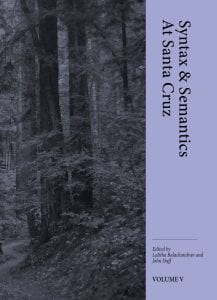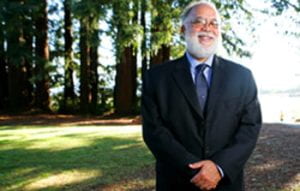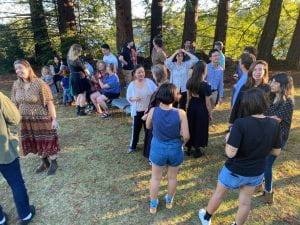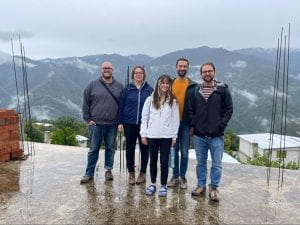
Zapotec Language Project team members in Santiago Laxopa in July 2022: Myke Brinkerhoff, Maya Wax Cavallaro, Delaney Gomez-Jackson, Maziar Toosarvandani, and Jack Duff (from left to right).
This summer, linguists working on the Zapotec Language Project traveled to Santiago Laxopa in the Sierra Norte mountains of Oaxaca for the first time since 2019, to work with speakers of the Zapotec language spoken there (Dille’ xhunh).
The first team, comprised of fifth year PhD student Jack Duff, MA student Delaney Gomez-Jackson, and Professor Maziar Toosarvandani, carried out an eyetracking study on the interpretation of relative clauses, in collaboration with language expert Fe Silva-Robles. This project was supported by a National Science Foundation grant, directed by Toosarvandani with Professors Ivy Sichel and Matt Wagers, which is also supporting a range of other activities in the Department on resumption and animacy.
Members of the team also met one on one with speakers to investigate different aspects of Zapotec grammar and made recordings of narratives.
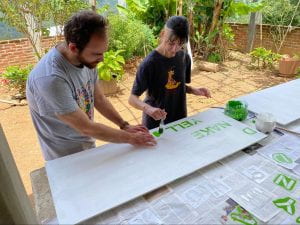
Jack Duff (left) and Delaney Gomez-Jackson (right) painting a sign in Zapotec, which eventually will read De’nh tsekwelle’ nakenh lalldo’ yell tsedzu (Music is the soul of our town)
As service to the community, they taught math classes for the town’s children in Spanish and Zapotec and supported Silva Robles as she led reading and writing workshops for the language. As part of these workshops, the team presented the town with an alphabet poster featuring a preliminary orthography for their Zapotec language, as well as three illustrated books and (hand painted) signs using the orthography. These gifts contributed to the town’s ongoing conversations about how best to write its language.
A second team, comprised of fourth years PhD students Myke Brinkerhoff and Maya Wax Cavallaro, collected data for phonetic and phonological projects on tone and phonation. They also recorded narratives, vocabulary related to healing plants, recipes, and a description of how to make capisallos (multipurpose textiles made from palm leaves). Wax Cavallaro also had the opportunity to follow in the footsteps of previous UC Santa Cruz grad students, playing in the town’s banda during the annual fiesta.
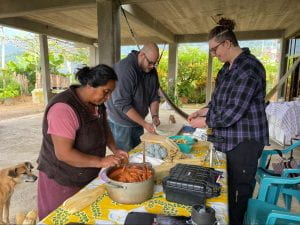
Myke Brinkhoff (back center) and Maya Wax Cavallaro (right) recording (and learning) how to make yetgu’ (tamales) from Olivia Maldonado Maldonado
